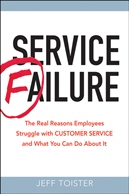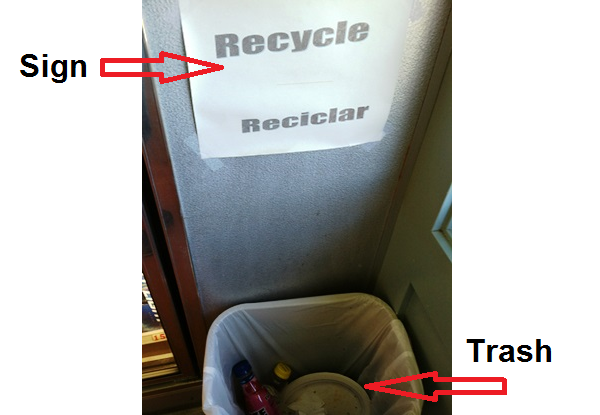Connecting rapport to five star service
 Jeff Toister
Jeff Toister  Tuesday, June 11, 2013 at 8:25AM |
Tuesday, June 11, 2013 at 8:25AM | I often write about service failures and what we can learn about them. This post is about the other side of the coin. Specifically, I want to share ways that building rapport can have an inordinate on customers’ perceptions of service quality.
First, let’s define rapport.
According to Merriam-Webster’s online dictionary, rapport is a “relation marked by harmony, conformity, accord, or affinity.” In a customer service context, this involves connecting with customers in a way that causes them to see you as a real, likeable person.
Operationalizing Rapport
Terms like rapport can be a bit squishy, making it hard to observe, quantify, and even train. One way to operationalize the definition of rapport is to count how often people mention someone by name in the comments section of your customer service survey.
I started noticing a very specific trend around names while helping a client analyze their customer satisfaction data. Their survey had an overall satisfaction question where customers were asked to rate their service on a three-point scale:
- Above Expectations
- At Expectations
- Below Expectations
A definite pattern emerged when I separated the comments section by rating. Individual employees were mentioned by name much more frequently when customers gave their service an “Above Expectations” score. Here’s the distribution for one of the groups I worked with:

Just for fun, I analyzed the Yelp reviews for my favorite Italian restaurant, Antica Trattoria. Their overall rating is 4.0 stars with slightly more than half the reviews giving 5 stars. However, you’ll see a familiar pattern if you look at the reviews that mentioned an Antica Trattoria employee by name:

Will this trend hold up when you analyze your own voice of customer data? I don’t know, but it is worth a look.
Barriers to Rapport
If rapport is highly correlated to outstanding service, why doesn’t it happen more often? One explanation might be that customer service professionals face a number of barriers that can make rapport-building difficult.
- Speed. It’s hard to build rapport when employees are in a hurry.
- Skill. Many people simply don’t know how to build rapport with customers.
- Sales. It’s really hard to like an overly aggressive salesperson.
- Task-focus. Rapport takes a hit when tasks are prioritized over service.
- Customers. Some customers are jerks and resist rapport.
Are there other barriers that I missed? What do you see?
How to Build Rapport
You’ll have to remove these barriers if you want your employees to build more rapport with customers. Here are three simple steps to help your employees become rapport-building champions.
Step 1: Look at the Data
Review your customer satsifaction data to see how rapport might be impacting service quality. Do you see evidence of greater rapport in your top box survey scores? Are some employees consistently mentioned in customer service surveys while others are not?
Step 2: Observe
You can learn a lot by assessing the current situation before doing any tinkering. Watch your employees serve customers. Can you observe any of the barriers to rapport mentioned above?
Step 3: Engage the Team
Share your observations with your employees and ask them to help you find solutions. You might be surprised at how many good ideas your team can come up with. You’ll also notice they are more like to implement ideas that are their own.
In many cases, employees just need a little bit of training to help become more adept at building rapport. One of my favorite exercises is called the five question technique. It’s based on the idea that having a short list of conversation starting questions at the ready can make anyone seem like a rapport-building pro.
Here’s how it works:
- Ask employees to brainstorm a list of five rapport-building questions.
- Have employees practice using these questions with customers.
- At least one of these questions will be effective in almost any situation.
You can learn more about this and other rapport building tips in my customer service idea bank.






